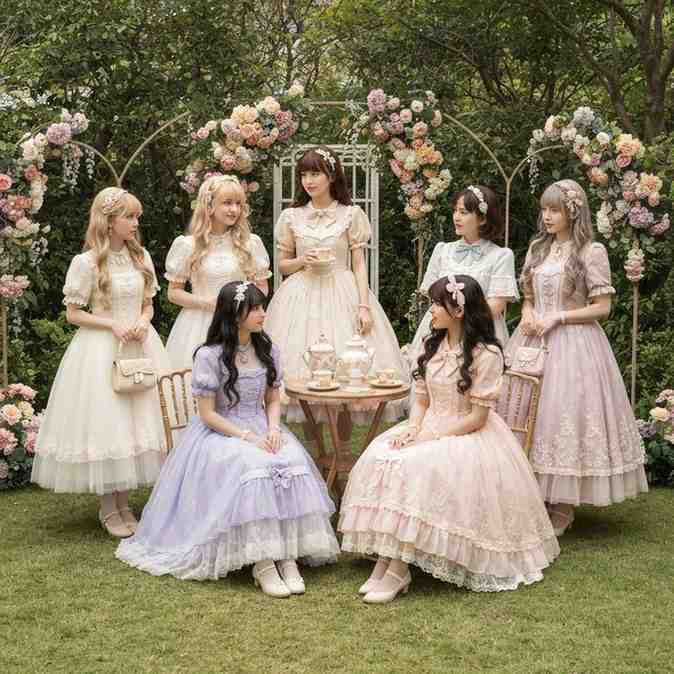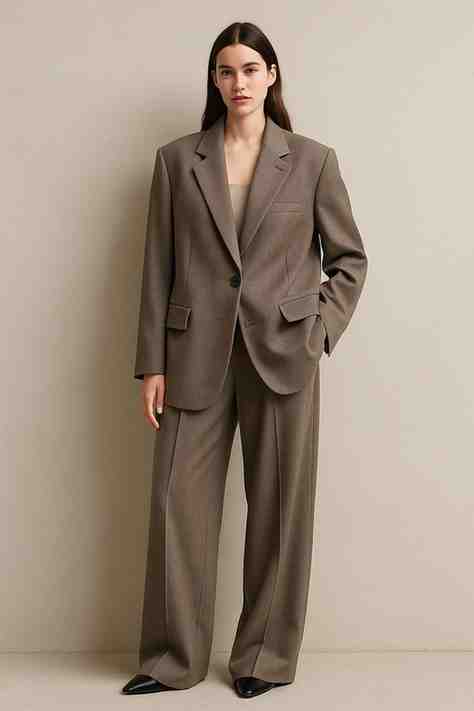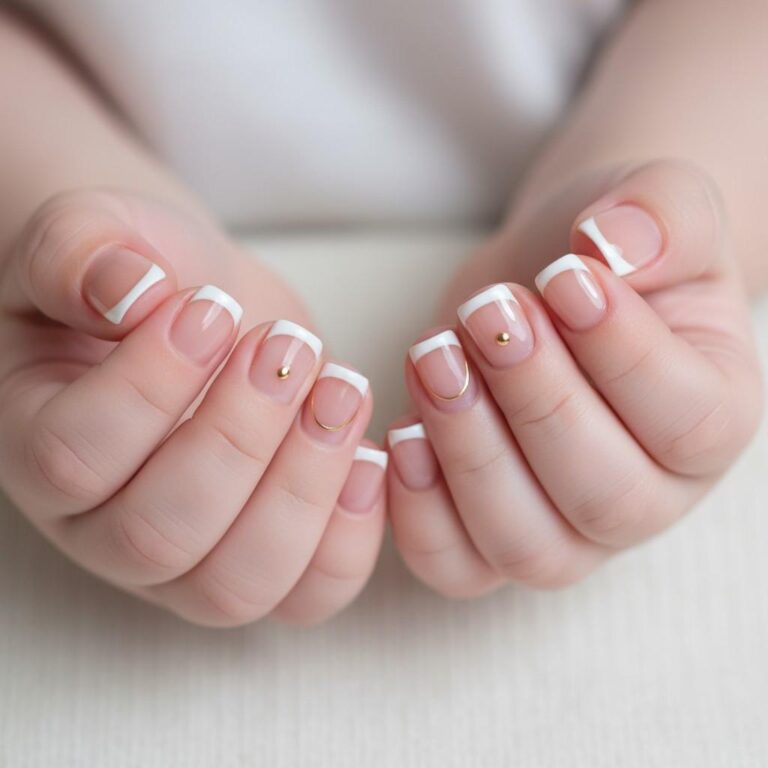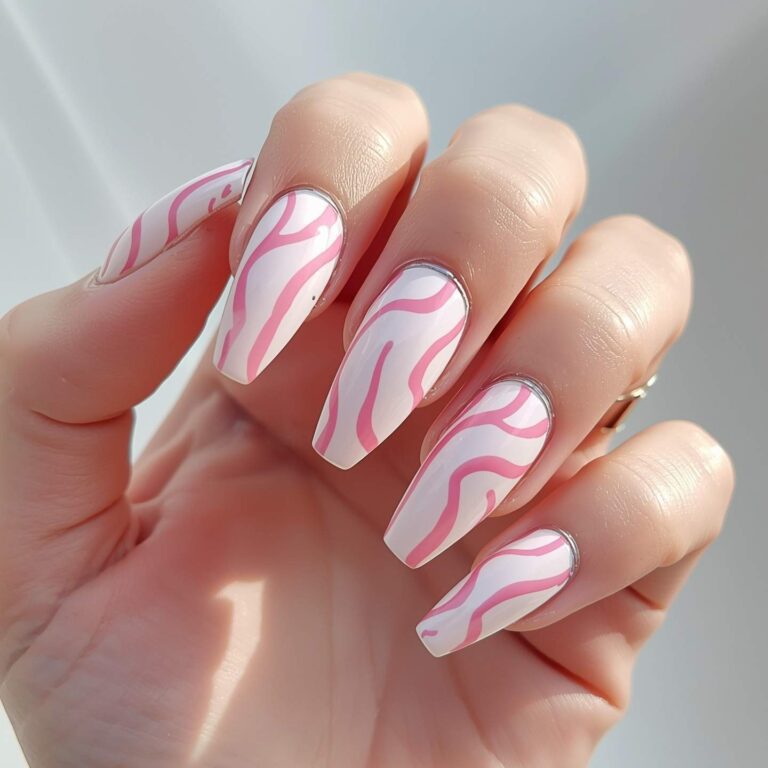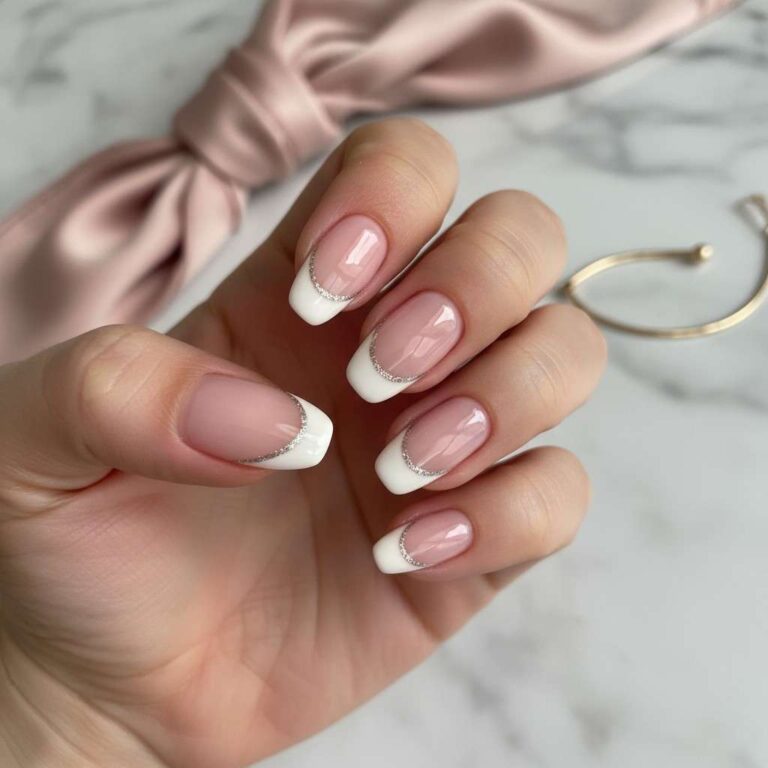Lolita Fashion Guide: History, Styles & Men’s Ouji Look
Lolita Fashion: A Complete Guide with Men’s Perspective
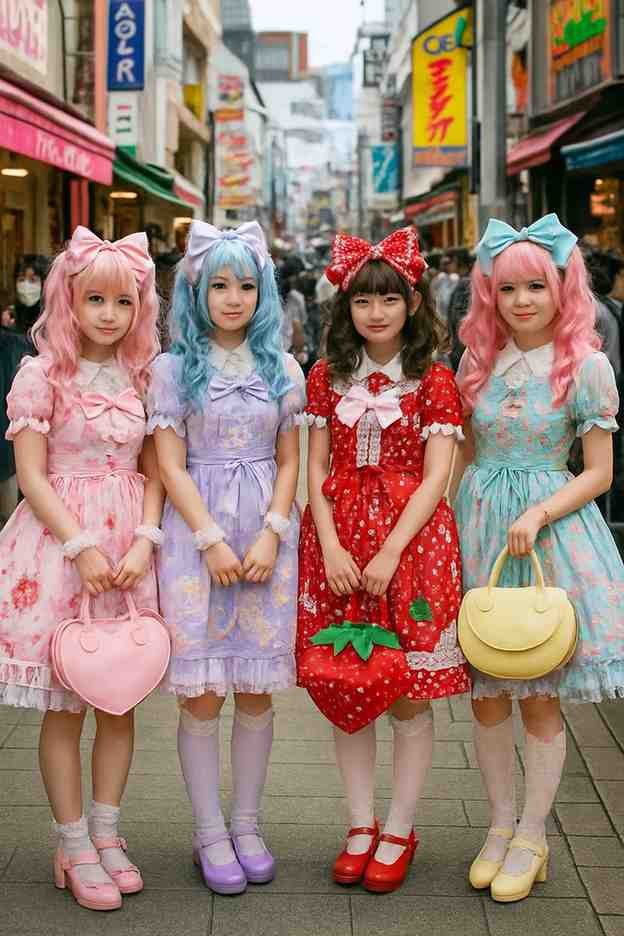
Introduction
Lolita fashion is more than just clothing; it is an entire subculture born in Japan that emphasizes elegance, modesty, and creativity. Unlike fleeting fashion trends, Lolita fashion has endured for decades because it represents a lifestyle and a form of self-expression.
Many people new to the term associate it with literature, but in reality, Lolita fashion has no connection to Nabokov’s novel. Instead, it is a historical, artistic, and deeply personal fashion movement that reflects influences from the Victorian and Rococo eras while adapting them into modern streetwear.
This guide explores the origins of Lolita fashion, its key elements, and why it continues to inspire people around the world. It also sheds light on men’s participation in the style, a perspective often overlooked but equally important. Also readhttps://thebeautyduty.com/2025/09/18/bixie-haircut-trend/
History and Origins of Lolita Fashion
Early Beginnings in Japan
The story of Lolita fashion begins in the vibrant Harajuku district of Tokyo during the late 1970s and early 1980s. Young people were searching for alternatives to standardized clothing and mass-market culture. By blending Western historical fashion with Japanese creativity, they created a distinctive identity that celebrated individuality.
Influence of Victorian and Rococo Eras
Two major inspirations shaped Lolita fashion: the elegance of the Victorian age and the extravagance of Rococo styles. From the Victorian era came modest silhouettes, lace detailing, and structured garments. From Rococo influences, enthusiasts borrowed ornate accessories, bows, and pastel shades. Together, these elements gave rise to an aesthetic that felt both nostalgic and refreshing.
The Role of Japanese Brands
By the 1990s, dedicated Japanese brands such as Baby, The Stars Shine Bright, Angelic Pretty, and Metamorphose Temps de Fille began producing designs that would define Lolita fashion. Their work popularized iconic garments like petticoats, bell-shaped skirts, and elaborate blouses. As magazines and street style photography spread these looks, international audiences became fascinated.
Global Spread and Community Growth
Through conventions, online forums, and social media, Lolita fashion crossed borders and became a worldwide movement. Communities in Europe, North America, and Asia embraced the style, hosting meetups, tea parties, and cultural events. Unlike temporary trends, it thrived as a subculture that valued craftsmanship, personal expression, and a sense of belonging.
Core Elements of Lolita Fashion
The Silhouette
At the heart of Lolita fashion lies its iconic silhouette: a bell-shaped skirt supported by petticoats or hoop skirts. This shape creates a doll-like effect that distinguishes Lolita outfits from ordinary dresses. The silhouette is not just about aesthetics but also about modesty and structure, which form the foundation of every look.
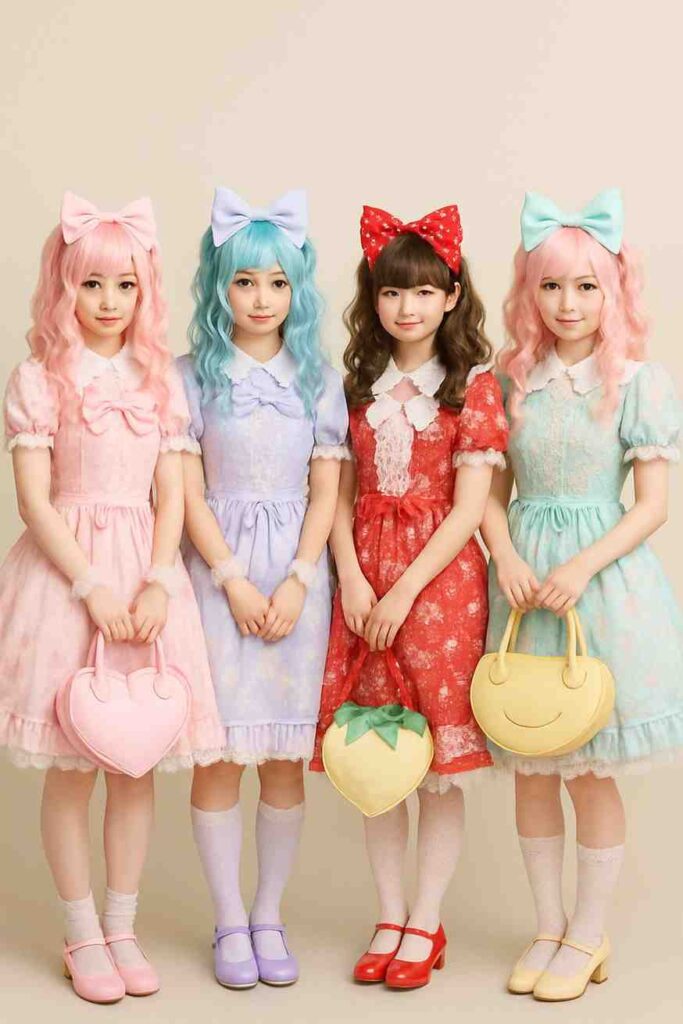
Fabrics and Materials
High-quality fabrics are central to Lolita fashion. Cotton, velvet, chiffon, and lace are often used to create outfits that are both elegant and durable. Unlike fast fashion, where materials are chosen for cost efficiency, Lolita fashion emphasizes craftsmanship and long-lasting garments.
Accessories and Details
Accessories play a vital role in completing the aesthetic. From bonnets and bows to parasols and ornate jewelry, each detail enhances the overall harmony of the outfit. Bags shaped like books, stuffed animals, or vintage chests often accompany these ensembles, adding personality and charm.
Footwear Choices
Shoes in Lolita fashion are carefully selected to complement the silhouette. Classic options include Mary Janes, platform heels, and lace-up boots. Footwear is not only practical but also essential for maintaining the balance and elegance of the look.
Popular Substyles of Lolita Fashion
Sweet Lolita
Sweet Lolita is one of the most iconic and widely recognized substyles of Lolita fashion. It embraces pastel colors, playful motifs, and childlike innocence. Dresses often feature prints of cupcakes, ribbons, carousel horses, or teddy bears. Fabrics are typically soft and lightweight, enhancing the dreamy and whimsical effect. Accessories such as oversized bows, bonnets, and lace socks complete the look. The aim is to resemble a fairytale doll, combining charm with fantasy.
Gothic Lolita
On the opposite end of the spectrum lies Gothic Lolita. This substyle merges Victorian elegance with Gothic drama. Outfits primarily use dark colors such as black, navy, and crimson, often contrasted with lace or metallic accents. Common themes include roses, crucifixes, bats, and cathedral-inspired prints. Makeup is darker, with bold eyeliner and deep lip shades to match the intensity of the clothing. Gothic Lolita appeals to those who prefer sophistication with a mysterious edge.
Classic Lolita
Classic Lolita is more refined and mature compared to the Sweet or Gothic variations. Earth tones, muted florals, and antique jewelry dominate this substyle. The prints may resemble vintage wallpaper or traditional European art. Classic Lolita is often chosen by individuals who appreciate historical fashion but want something subtle and elegant rather than dramatic or overtly cute.
Punk Lolita
Punk Lolita combines the playful silhouette of Lolita fashion with rebellious punk influences. Outfits might include tartan skirts, safety pins, chains, or distressed fabrics while still keeping the signature bell shape. It is less common but offers a creative way to merge two contrasting aesthetics. This substyle demonstrates that Lolita fashion can adapt to modern edginess without losing its core identity.
Casual Lolita
Not every day is meant for elaborate tea parties or conventions. That is where Casual Lolita comes in. It simplifies the style by using toned-down pieces such as blouses with simple skirts, lighter petticoats, and minimal accessories. Casual Lolita allows enthusiasts to incorporate elements of the fashion into daily life while remaining comfortable and practical. Buy now lolita fashion clothes here https://amzn.to/4gIfbtR

Men’s Fashion in Lolita: The Ouji or Prince Style
What is Ouji Fashion?
While many assume Lolita fashion is exclusively feminine, men also have a dedicated space in the subculture through Ouji fashion, also called Prince style. The term “Ouji” means prince in Japanese, and this style offers a masculine interpretation of Lolita aesthetics. Instead of bell-shaped dresses, Ouji fashion favors tailored shorts, blouses with ruffles, cravats, and frock coats.
Key Features of Ouji Style
- Silhouette: More rectangular compared to the bell shape of traditional Lolita, but still elaborate and layered.
- Tops: Ruffled blouses, waistcoats, and jackets inspired by European nobility.
- Bottoms: Shorts, often knee-length, paired with tights or socks.
- Accessories: Hats, pocket watches, brooches, and sometimes capes.
- Footwear: Elegant boots or buckle shoes to maintain the aristocratic vibe.
Adapting Lolita Fashion for Men
Men who embrace Lolita fashion often blend elements from Gothic or Classic substyles into Ouji clothing. For example, a black velvet frock coat with lace cuffs channels Gothic Lolita, while a floral waistcoat with neutral tones leans toward Classic Lolita. This flexibility allows men to participate in the subculture without compromising masculinity.
Styling Tips for Beginners
- Start with a blouse and shorts: A ruffled shirt paired with tailored shorts and long socks offers a simple entry point.
- Experiment with layers: Waistcoats, jackets, and cravats help build dimension.
- Add accessories gradually: A brooch, hat, or pocket watch can elevate the outfit without overwhelming it.
- Choose the right footwear: Boots or buckle shoes complete the look and balance the silhouette.
- Confidence matters: Ouji fashion is bold, and wearing it with confidence is as important as the clothing itself.
Why Ouji Fashion Matters
Ouji fashion highlights that Lolita is not limited to women’s clothing but rather a diverse cultural movement. It provides men with the opportunity to explore historical fashion, elegance, and creativity. By participating in the style, men contribute to the inclusivity and evolution of the Lolita community.

How to Try Lolita Fashion as a Beginner
Start Small
For newcomers, diving straight into a full Lolita wardrobe can feel overwhelming. The best approach is to begin with basic pieces such as a blouse, a modest petticoat, and a simple skirt. This way, you can understand the silhouette without committing to heavy investments.
Invest in Essentials
The foundation of every Lolita fashion look is a bell-shaped skirt or dress supported by a petticoat. Add a lace blouse, knee-high socks, and a pair of classic shoes like Mary Janes or boots. These essentials allow you to experiment with different substyles later.
Accessorize Thoughtfully
Accessories are vital but should be added gradually. A bow headband, a bonnet, or a parasol can completely transform an outfit. Beginners should choose one or two signature accessories instead of overloading with details.
Explore Ouji Style for Men
For men, Ouji fashion provides a smoother entry point. Start with tailored shorts, a ruffled blouse, and long socks. From there, experiment with jackets, waistcoats, and accessories such as pocket watches or hats. This allows men to embrace Lolita fashion while keeping their style masculine and elegant. Buy now the lolita fashion boots here https://amzn.to/42MO1vM
Grooming, Hair, and Makeup
While clothing is the centerpiece of Lolita fashion, grooming and hairstyles enhance the overall effect.

- Hair: Curls, braids, and wigs are common for women, while men can experiment with neat, styled cuts or wigs that match their chosen substyle.
- Makeup: Sweet Lolita often uses soft, natural tones; Gothic Lolita prefers dark eyeliner and bold lips; Classic Lolita focuses on neutral elegance. Men adopting the Ouji fashion can keep makeup subtle, focusing on skincare, light foundation, or gentle contouring.
- Grooming: Clean nails, polished shoes, and attention to detail elevate the outfit from costume to sophisticated fashion.
Modern Influence and Global Reach
Lolita fashion has expanded far beyond Japan. Conventions in Europe, North America, and Asia host thousands of enthusiasts who gather for tea parties, fashion shows, and cultural exchanges. Online platforms such as Instagram, TikTok, and dedicated forums keep the community alive by sharing outfit inspiration and tutorials.
Celebrities and designers occasionally borrow elements of Lolita aesthetics in music videos, runway shows, and photo shoots. While mainstream interpretations are often simplified, they prove how influential the style has become.
Most importantly, Lolita fashion has created a safe space for people to express individuality. It defies fast fashion and encourages quality, creativity, and self-confidence. As sustainability becomes more important in modern wardrobes, Lolita fashion’s emphasis on durable, well-crafted clothing feels more relevant than ever. Also readhttps://thebeautyduty.com/2025/09/15/paco-rabanne-1-million-review-2025/
Conclusion
Lolita fashion is not just clothing; it is history, culture, and community woven into fabric. With roots in Japan and inspirations from Victorian and Rococo fashion, it continues to inspire creativity worldwide. From whimsical Sweet Lolita to dramatic Gothic Lolita and sophisticated Classic Lolita, each substyle allows wearers to express a unique identity.
Men’s participation through Ouji or Prince style further proves that Lolita is inclusive and adaptable. Whether you are just starting with a blouse and skirt or curating an entire wardrobe, the journey is about confidence and self-expression.
For beginners, the key is to experiment slowly, embrace individuality, and connect with the community. Lolita fashion will always remain more than a trend — it is a lifestyle that celebrates elegance, creativity, and freedom.
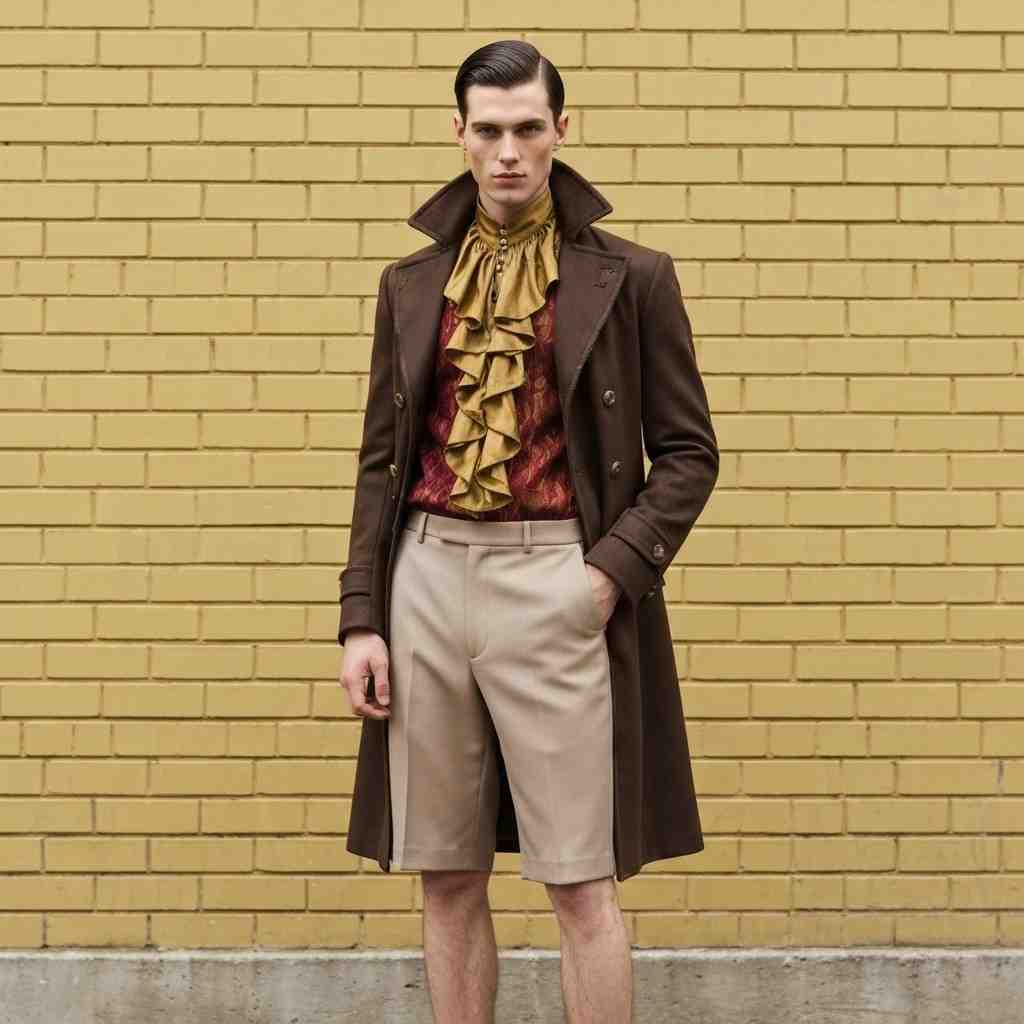
Frequently Asked Questions (FAQ)
1. What is Lolita fashion?
Lolita fashion is a Japanese street style inspired by Victorian and Rococo clothing. It emphasizes modesty, elegance, and individuality through structured silhouettes and ornate details.
2. Is Lolita fashion related to Nabokov’s novel?
No. The fashion has no connection to literature. The name was adopted separately in Japan and refers only to the style.
3. Can men wear Lolita fashion?
Yes. Men participate through Ouji fashion, also known as Prince style, which adapts Lolita aesthetics into masculine clothing.
4. Is Lolta fashion expensive?
It can be, since quality fabrics and craftsmanship are valued. However, beginners can start with affordable secondhand items or simple accessories.
5. How do I start wearing Lolita fashion?
Begin with basics such as a petticoat, blouse, and skirt. Gradually add accessories and explore different substyles until you find one that matches your personality.
6. Is Lolita fashion still popular today?
Absolutely. The style has global communities, conventions, and online platforms where enthusiasts actively share and celebrate the fashion.
